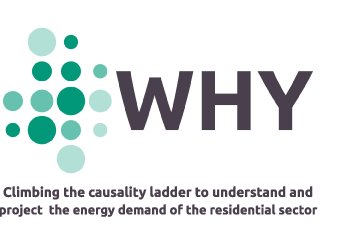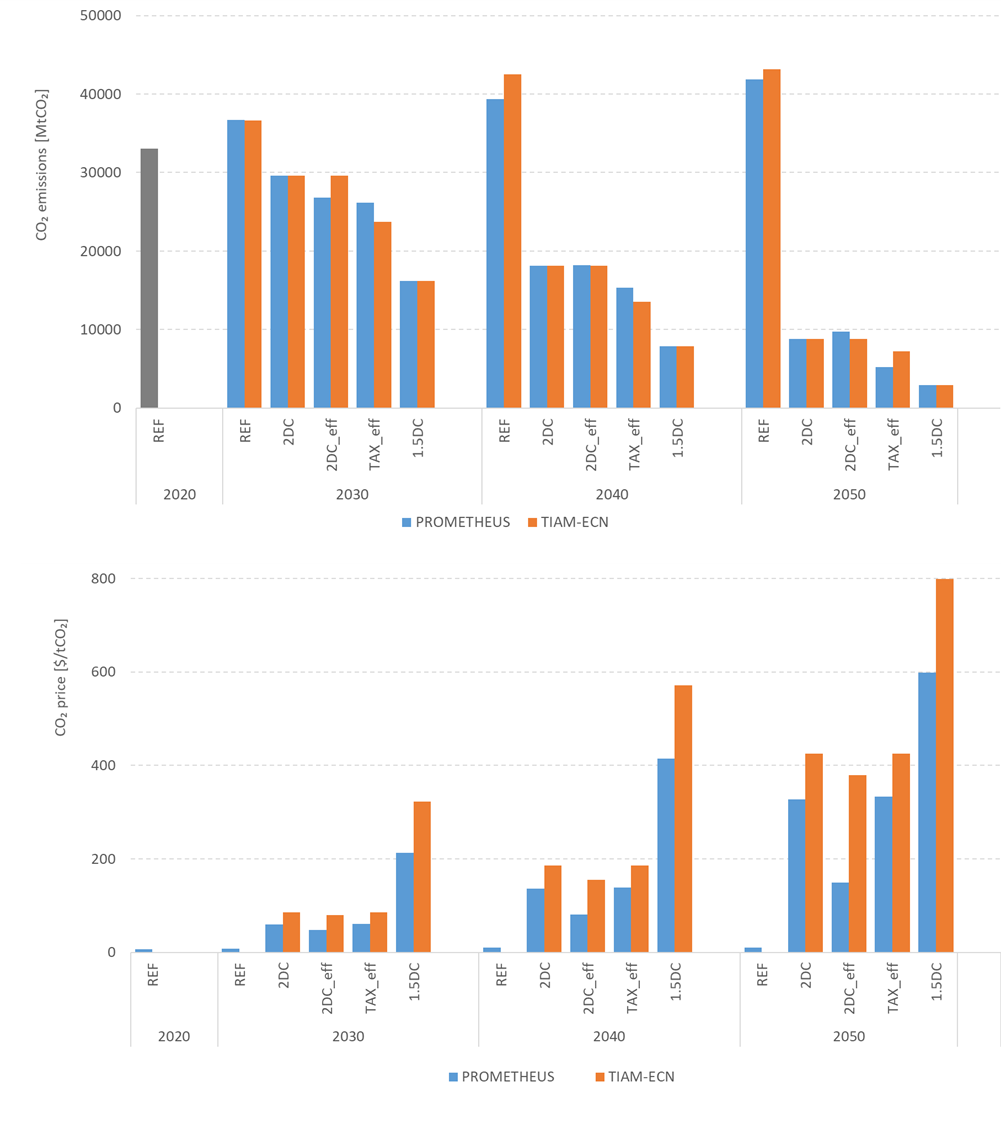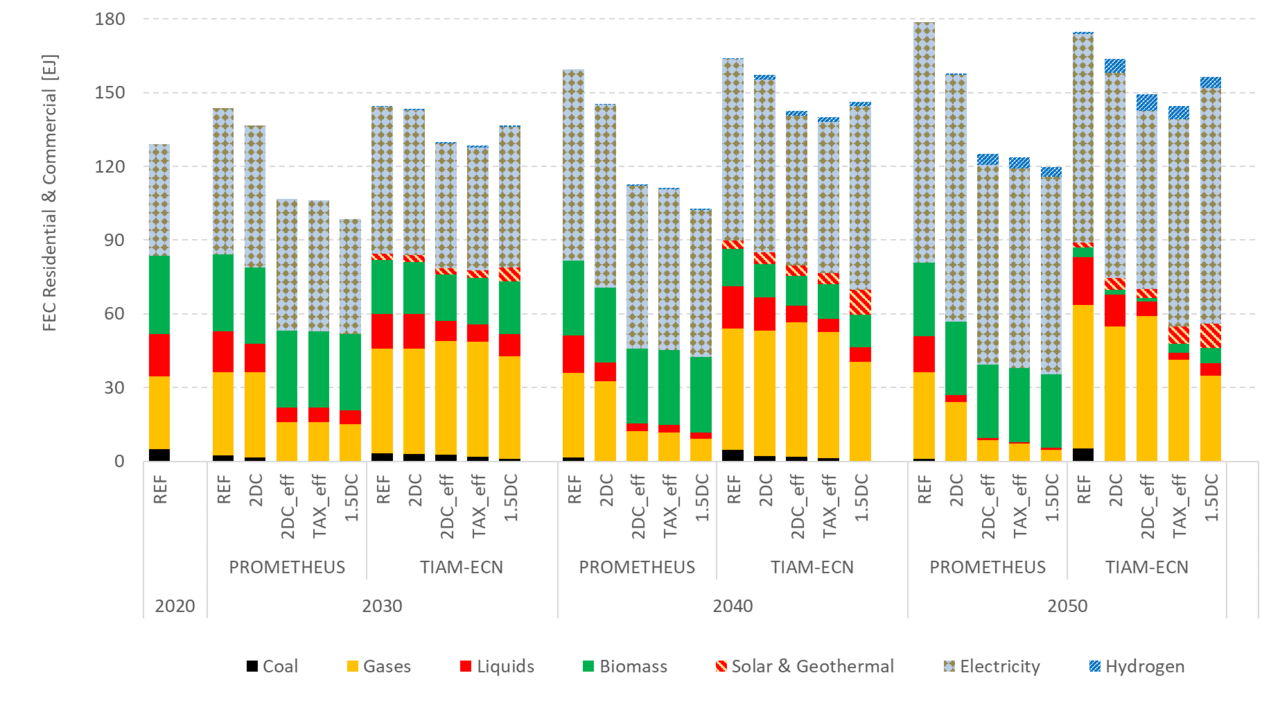System-level Effects of Increased Energy Efficiency in Global Low-carbon Scenarios: a Model Comparison
Scientific Paper Published
Supporting investments in energy efficiency is considered a key strategy to achieve a successful transition to low-carbon energy systems in line with the Paris Agreement. Increased energy efficiency levels are expected to reduce the need for investments in controversial technologies, such as carbon dioxide capture and storage (CCS) and nuclear energy, and to induce a downward push on carbon prices, which may facilitate the political and societal acceptance of climate policies, without adversely affecting living comfort and sustainable development. In order to fully reap these potential benefits, economies need to design policy packages that balance emission reduction incentives on both the demand and the supply side. This short article presents a model-comparison exercise, using two well-established global integrated assessment models, PROMETHEUS and TIAM-ECN, to quantitatively analyze the global system-level effects of increased energy efficiency in the context of deep decarbonization scenarios. Our results confirm the expected benefits induced by higher energy efficiency levels, as in 2050 global carbon prices decline by 10%-50% and CO2 storage from CCS plants is 13%-90% lower relative to the “default” mitigation scenarios. Additional annual energy system costs to achieve Paris goals are estimated to be about 2 trillion US$ – or 1% of global GDP – and can be reduced by 6-30% with the adoption of higher energy efficiency standards. While the two models project broadly consistent future trends for the energy mix, the effects may differ in magnitude due to intrinsic differences in how the models are set up and how sensitive they are to changes in energy efficiency and emission reduction targets.
We develop five scenarios based on specific assumptions with regard to (i) climate change mitigation targets, (ii) energy efficiency improvements, and (iii) carbon price developments. These scenarios are implemented in PROMETHEUS and TIAM-ECN.
Table 1 presents a summary of the key assumptions used in each scenario:
Scenario | Climate Targets | Energy Efficiency | Carbon Price |
REF | No additional targets beyond current 2030 climate policies | Endogenous | Endogenous |
2DC | Global 2016-2050 carbon budget of 850 Gt CO2 (compatible with a below-2°C target) | Endogenous | Endogenous |
2DC_eff | Global 2016-2050 carbon budget of 850 Gt CO2 (compatible with a below-2°C target) | Exogenously increased in all sectors to levels higher than in 2DC | Endogenous |
TAX_eff | No additional targets beyond current 2030 climate policies | Exogenously increased in all sectors to levels higher than in 2DC | Exogenous, based on 2DC scenario |
1.5DC | Global 2016-2050 carbon budget of 600 Gt CO2 (compatible with a below-1.5°C target) | Endogenous | Endogenous |
Figure 1 presents the projections for energy-related CO2 emissions (top panel) and carbon price (bottom panel) obtained with PROMETHEUS and TIAM-ECN. The emission cap imposed in the climate mitigation scenarios triggers an endogenous increase in carbon price with respect to REF. The enhanced energy efficiency assumption in 2DC_eff results in a less pronounced increase. This shows that the implementation of ambitious efficiency policies, standards and regulation may reduce the need for high carbon pricing to achieve the same mitigation target. In TAX_eff the carbon price is imposed exogenously to trigger emission reductions without applying a CO2 cap. This scenario illustrates that utilizing energy efficiency policies and standards could prove an effective way to bridge the effort gap between a “well below” 2°C scenario and a below 1.5°C one without requiring very high CO2 prices until 2050.
In Figure 2 we show our scenario projections for the final energy mix in buildings sector, which is the focus of WHY project. In the REF scenario, energy consumption of buildings grows steadily at similar rates for both models, as a consequence of growing population and GDP, increasing urbanization and rising income and living standards in developing economies. The application of emission reduction and efficiency constraints in the low-carbon scenarios causes a reduction of total FEC in buildings - triggered by an increased rate and depth of renovation, a more rational use of energy and the uptake of more efficient fuels and equipment - and the emergence of electricity and hydrogen for heating, accompanied, in the TIAM-ECN case, by a growth of solar thermal and geothermal technologies.
Considering the model-based outcomes in the various combinations of climate mitigation and energy efficiency policies that our low-carbon scenarios entail, several pillars to achieve decarbonization are identified. First, a large expansion of energy generation from renewable sources is projected for all sectors, and is especially prominent in the power generation sector, which in some cases becomes almost carbon-free by 2050. Second, the dependence of end-use energy services on fossil fuels can be lessened through an increase in electrification across the demand sectors, complemented by the deployment of low-carbon fuels (e.g. advanced biofuels and hydrogen) when electrification is not technically and economically feasible (e.g. aviation, navigation). Third, energy savings through uptake of enhanced energy efficiency technologies or through improved thermal insulation of buildings can reduce emissions across the economy. Fourth, the deployment of carbon removal technologies, such as CCS, is necessary to achieve ambitious decarbonization targets. CCS requirements are, however, considerably lower if ambitious efficiency policies are implemented, thus reducing society's reliance on a costly and risky technology, currently not used at scale.
IAM analysis should be complemented by detailed modeling at urban and suburban scale, possibly also including elements for which IAMs are not particularly well-suited, such as consumer behavior, lifestyle changes and representation of short-term targets and policy instruments at (sub-)national level. Improving the way some of these aspects can be simulated in different types of models (including, but not limited to IAMs) is the core focus of the WHY project. As the tools developed in WHY evolve including granular representation of technical and behavioral aspects, we will integrate them in our IAMs to address some of the open questions presented here.
Authors:
Francesco Dalla Longa1, Panagiotis Fragkos2, Larissa Pupo Nogueira1, Bob van der Zwaan1,3,4
1 TNO Energy Transition Studies, Amsterdam, The Netherlands
2 E3 Modelling, Athens, Greece
2 University of Amsterdam, Faculty of Science (HIMS and IAS), Amsterdam, The Netherlands
3 Johns Hopkins University, School of Advanced International Studies (SAIS), Bologna, Italy






